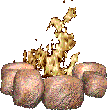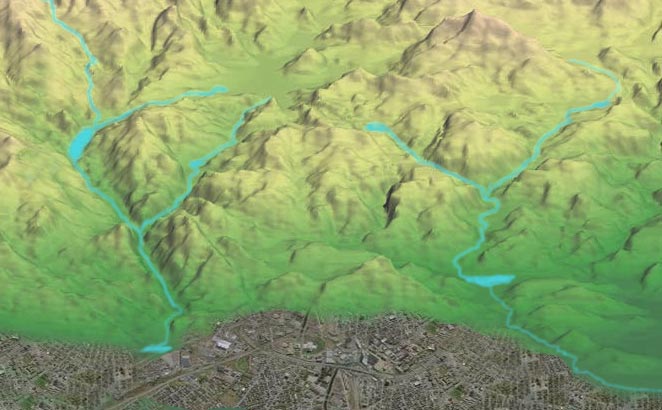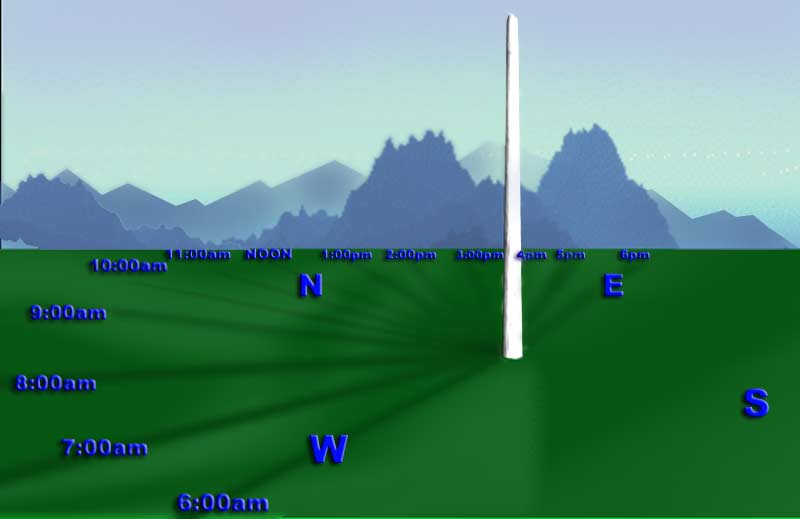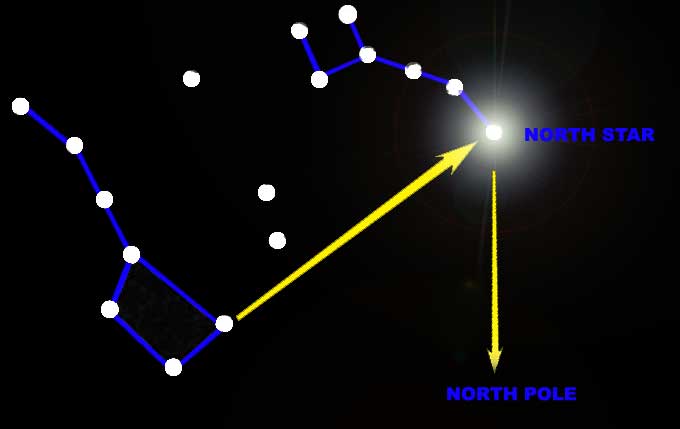 NAVIGATION
NAVIGATIONAll Text, Graphics, Animations, Video, and Commentary on this website was created by, and is the intellectual property of m4040@m4040.com. All Rights Reserved. Unauthorized reproduction is punishable by up to a $500,000 fine or 5 years imprisonment for a first offense, and up to a $1,000,000 fine or up to 10 years imprisonment for subsequent offenses under the Digital Millenium Copyright Act (DMCA). Requests for use of this material should be forwarded to m4040@m4040.com. Why did I add this disclaimer? SEE WHY.
 NAVIGATION
NAVIGATION
INTRODUCTION
Whole books have been written on the subject of Navigation (otherwise known as Orienteering), but I will keep this to a very basic primer for those who have never used a compass to find their way. One item that you see listed in just about every Survival Kit is a Compass. Knowing how to use it could mean the difference between coming home or truly "returning to nature". If you know what direction you came from when you went into the woods, you can find your way back out in short order by using a compass. Even if you DON'T know what direction you originally came from, the compass may not help you to get back to your origin, but it WILL help keep you from wandering in circles. Wandering in circles can be scenic, but is typically a waste of your time and energy nonetheless : ) If you know what direction you came from, simply take and follow a heading (more on that later).
SHOULD YOU TRY TO FIND YOUR WAY OUT?
If you are not sure what direction you came from, then you must make a difficult decision. First, how long will it be until someone comes looking for you? If nobody is likely to come looking, for instance if you went for a hike without telling anyone where you were going (not very bright of you, eh?), then you'll probably need to find your own way out. The second question you must ask yourself is, based on your knowledge of the area, could you get much more lost by choosing a direction and sticking to it? This can be answered by where you are. If you are in a small stretch of wilderness, then one or more days of hiking in any direction will likely get you to a road or some form of civilization. The opposite of this would be if you went for a day hike in the Rocky Mountains, because choosing the wrong direction could lead you deep into hundreds of miles of wilderness, and away from civilization. If the circumstances warrant trying to find your own way out, then choose your best guess for direction, and use the compass as explained below.

In the example above, if you had hiked North from town into the hills, you could reasonably expect that by heading in a Southerly direction, you will eventually come back to town. If you have no compass, or don't know which direction town is in, then choosing the wrong direction could be deadly in this case. If you know the area and have a map, then you would know that (in this case) just about any downhill walk will get you to a stream, and that following that stream downhill will get you back to town. You'd be surprised how often this is the case. The lesson here is... know the area you're hiking.
TAKING AND FOLLOWING A HEADING
Whether you chose a direction by certain knowledge, or by guesswork, you must now use the compass to actually head in that direction. This is NOT as simple as just glancing at the compass and walking. Believe it or not, that can have you wandering all over the place. What you must do is take a "Heading". To take a Heading, Level the compass to allow it to point North. Once North has been established, find the direction you want to go, and choose a terrain feature in that direction that is both far away and easy to differentiate from other features (a hilltop, large tree, rock, etc). You have just taken a heading. Some compasses (called "Lensatic" compasses), have a sighting device built in to help pick out the object.
The next step is to make your way to the object you picked out. As you approach or reach the object itself, take another heading, pick another object, and continue on your way. Continuing to repeat these two steps keeps you headed in the direction you chose.
The reasoning behind this method is that it allows you to head for faraway objects in the easiest way or path available. If you were to just keep watching the compass and walking, you would have to potentially trek through swamps, thorns, up or down cliffs, etc. By picking large objects in the distance, you can focus on the best way to get to each. Note that in dense forest or jungle, you will either have to climb a tree now and again, or just pick tree trunks or other objects as far away as the foliage allows you to see.
How to find direction without a compass
There are quite a few ways to determine direction without a compass, but the easiest way is to orient based on the sun and stars.
During the day, a simple sundial will give you a good idea of both what time it is, and also your directional orientation. Whereas the sun rises in the East, the shadow from a pole placed upright in the ground will fall to the West and vice versa. Over the course of a day, one should be able to plot this out, marking the points in the ground with stakes.

At night, the best way is to locate the North star. While all the heavens may seem to move in relation to us, the North star is always immobile in the sky. In fact, it is never more than one degree from true North. If you can locate the Big Dipper, you can locate the North Star. Use the leading edge of the Big Dipper to locate the Little Dipper as shown. The star at the tip of the handle of the Little Dipper is the North Star.

For more on the subject of Navigation, I recommend the be-all and end-all reference on the subject, which is the US Department of Defense reference titled, "FM 3-25-26 Map Reading and Land Navigation".
I have reproduced the chapter from that book titled Land Navigation on my ADVANCED NAVIGATION PAGE.
FM 21-76 US ARMY SURVIVAL MANUAL
I will add to this page as often as I have time, but if you want the original be-all and end-all source of survival information, it is the FM 21-76 US ARMY SURVIVAL MANUAL. I have crunched it all into an MS Word Document. I abridged it only by removing the Appendixes from the end. It is 233 full size pages in all, and the overall file size is about 2.5Mb, so it is relatively easy to download. Whereas your tax dollars paid for it already, please feel free to distribute it as you see fit. Simply RIGHT CLICK HERE and select "Save As" to Download.
Don't have MS Word? They give away the viewer for free HERE